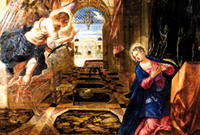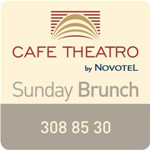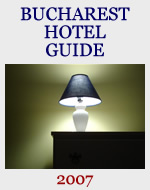From the classic to the tragic
|
 Banality and genius hang side by side at the newly reopened European Art Gallery, which occupies a wing of Romania’s National Museum of Arts.
Banality and genius hang side by side at the newly reopened European Art Gallery, which occupies a wing of Romania’s National Museum of Arts.
The luxurious interiors showcase mostly safe art among 3,000 paintings and sculptures, such as cherubs, fruit garlands, bored angels and tedious hunting scenes - which all reinforce, rather than challenge, the social order of their time. These decorative pastoral scenes would not dare cause offence in an Austrian aristocrat’s library or a Victorian tea room.
Among the pieces, from collections that include those of King Carol I, the central bank and the Ministry of Foreign Affairs, are some which carry the label of a genius, such as those from the school of Rembrandt, but which do not demonstrate the signature dark and fleshy qualities of the Dutch master.
However, each room, exhibiting classic periods of German, Italian, Spanish, Flemish and French art, does contain at least one classic – which is enough to expect from a national art gallery.
The best are the four seasons by Brueghel the Younger. Under fire in World War I, Romania sent the works for safe-keeping in 1916 to their Romanov friends in Moscow, to escape the clutches of the warmongering Kaiser. But once the Russian royals met a sticky end, the Soviets kept hold of the paintings.
Now recovered, these show a passing year in a peasant village in today’s Belgium. The workers shear sheep, plant crops, cut down wheat, kill animals and squash grapes. But, as with Brueghel, the scenes demonstrate the bawdy side of country matters – with buxom peasants flirting and binge-drinking while, in the winter scene, a man plays with the contents of his trousers in an improper fashion for public display.
These snapshots of country life show men and women engaged in the same roles, such as seed-planting, soliciting for sex or slaughtering livestock, and a world without authority. No one tells these people what to do. They labour under a practical instinct and obey their appetites, while, in the distance, a grey church stands empty. This is a powerful political work – one of the few on display – showing an idealised society that mixes both tradition and socialism.
The late 19th century paintings from France showcase fine impressionism, such as Pissarro’s ‘Orchard in blossom’ and Sisley’s ‘Church at Moret in Winter’. Best is Monet’s ‘Camille - the green dress’, where a comely woman of a certain age tries to engage the attentions of the viewer with a fan, but roams a stage where no one is present.
Another surprise is the new addition of Luis Cranach the Elder’s 16th century ‘Venus and Cupid’, which subverts the decorative approach to the love deity with a sexual colour scheme, showing Venus with fiery orange curls, in front of a rich burgundy drop, while Cupid has a dark red bow and dark red wings.
Fresh to the gallery is also ‘The Annunciation’ by Tintoretto, where the Angel and Mary are pushed to the side of the painting, while the central image is the floor between them a rich, geometric marble pattern. The hero of the piece is perspective, with the angel presenting to Mary a journey out of the room and into the open.
Despite many works which carry the crime of being bland, this gallery remains the perfect escape from the dirt, smog and insults weighing down a capital in a chaotic and never-ending transition.
Michael Bird
European Art Gallery
National Museum of Arts Romania (MNAR)
49 - 53 Calea Victoriei
Open Wednesday to Sunday
11 am to 7 pm









